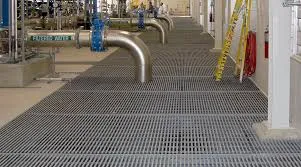
-
 Afrikaans
Afrikaans -
 Albanian
Albanian -
 Amharic
Amharic -
 Arabic
Arabic -
 Armenian
Armenian -
 Azerbaijani
Azerbaijani -
 Basque
Basque -
 Belarusian
Belarusian -
 Bengali
Bengali -
 Bosnian
Bosnian -
 Bulgarian
Bulgarian -
 Catalan
Catalan -
 Cebuano
Cebuano -
 China
China -
 China (Taiwan)
China (Taiwan) -
 Corsican
Corsican -
 Croatian
Croatian -
 Czech
Czech -
 Danish
Danish -
 Dutch
Dutch -
 English
English -
 Esperanto
Esperanto -
 Estonian
Estonian -
 Finnish
Finnish -
 French
French -
 Frisian
Frisian -
 Galician
Galician -
 Georgian
Georgian -
 German
German -
 Greek
Greek -
 Gujarati
Gujarati -
 Haitian Creole
Haitian Creole -
 hausa
hausa -
 hawaiian
hawaiian -
 Hebrew
Hebrew -
 Hindi
Hindi -
 Miao
Miao -
 Hungarian
Hungarian -
 Icelandic
Icelandic -
 igbo
igbo -
 Indonesian
Indonesian -
 irish
irish -
 Italian
Italian -
 Japanese
Japanese -
 Javanese
Javanese -
 Kannada
Kannada -
 kazakh
kazakh -
 Khmer
Khmer -
 Rwandese
Rwandese -
 Korean
Korean -
 Kurdish
Kurdish -
 Kyrgyz
Kyrgyz -
 Lao
Lao -
 Latin
Latin -
 Latvian
Latvian -
 Lithuanian
Lithuanian -
 Luxembourgish
Luxembourgish -
 Macedonian
Macedonian -
 Malgashi
Malgashi -
 Malay
Malay -
 Malayalam
Malayalam -
 Maltese
Maltese -
 Maori
Maori -
 Marathi
Marathi -
 Mongolian
Mongolian -
 Myanmar
Myanmar -
 Nepali
Nepali -
 Norwegian
Norwegian -
 Norwegian
Norwegian -
 Occitan
Occitan -
 Pashto
Pashto -
 Persian
Persian -
 Polish
Polish -
 Portuguese
Portuguese -
 Punjabi
Punjabi -
 Romanian
Romanian -
 Russian
Russian -
 Samoan
Samoan -
 Scottish Gaelic
Scottish Gaelic -
 Serbian
Serbian -
 Sesotho
Sesotho -
 Shona
Shona -
 Sindhi
Sindhi -
 Sinhala
Sinhala -
 Slovak
Slovak -
 Slovenian
Slovenian -
 Somali
Somali -
 Spanish
Spanish -
 Sundanese
Sundanese -
 Swahili
Swahili -
 Swedish
Swedish -
 Tagalog
Tagalog -
 Tajik
Tajik -
 Tamil
Tamil -
 Tatar
Tatar -
 Telugu
Telugu -
 Thai
Thai -
 Turkish
Turkish -
 Turkmen
Turkmen -
 Ukrainian
Ukrainian -
 Urdu
Urdu -
 Uighur
Uighur -
 Uzbek
Uzbek -
 Vietnamese
Vietnamese -
 Welsh
Welsh -
 Bantu
Bantu -
 Yiddish
Yiddish -
 Yoruba
Yoruba -
 Zulu
Zulu
frp chimney construction and installation for industrial and
FRP Chimney Construction and Installation for Industrial Applications
Fiber Reinforced Polymer (FRP) chimneys have become increasingly popular in industrial applications due to their superior properties over traditional materials such as concrete, brick, and metal. FRP is a composite material made from a polymer matrix reinforced with fibers, usually made of glass or carbon. This unique composition allows FRP chimneys to offer exceptional durability, corrosion resistance, and lightweight characteristics, making them an ideal choice for various industrial environments.
Advantages of FRP Chimneys
1. Corrosion Resistance One of the most significant advantages of FRP chimneys is their remarkable resistance to corrosion. Industries such as petrochemical, waste management, and power generation often operate in harsh environments where traditional materials rapidly degrade. FRP chimneys can withstand aggressive chemicals, moisture, and extreme weather conditions, ensuring a longer lifespan and reduced maintenance costs.
2. Lightweight Construction FRP is significantly lighter than traditional materials, which simplifies transportation and installation. This lightweight nature allows for easier handling and reduces the structural load on the foundation. Consequently, the overall construction cost can be lowered, and the installation process can be completed more efficiently.
3. Design Flexibility The versatility of FRP allows for complex and customized designs to meet specific industrial requirements. Manufacturers can easily shape and mold FRP to create chimneys with various diameters, heights, and configurations. This design flexibility can lead to improved aerodynamics, optimizing the chimney's performance and ensuring efficient gas emissions dispersal.
4. Thermal Insulation Another notable feature of FRP chimneys is their thermal insulation properties. They can maintain low temperatures on the outer surfaces, reducing the risk of heat-related damage to adjacent structures and significantly minimizing energy losses.
5. Compliance with Standards FRP chimneys have the advantage of being compliant with various industrial standards and regulations. Many manufacturers adhere to international quality standards such as ISO, ASTM, and ASME, ensuring that the chimneys are manufactured to function effectively in various applications.
Construction and Installation Process
frp chimney construction and installation for industrial and

The construction and installation of FRP chimneys involve several steps
1. Design and Engineering Initially, a thorough assessment of the site and requirements is conducted. Engineers will create detailed designs, including calculations for structural integrity, load analysis, and material selection. This stage is crucial to ensure that the chimney will operate effectively and meet regulatory compliance.
2. Fabrication Once the design is finalized, the FRP chimney is fabricated in a controlled environment. The composite materials are layered and cured according to specified standards, ensuring uniform strength and durability. Advanced manufacturing techniques such as filament winding or hand layup processes may be employed, depending on the complexity and specifications of the project.
3. Transportation After fabrication, the FRP chimney components are transported to the installation site. Given their lightweight nature, transportation is generally straightforward, although large modules may require special handling.
4. Installation The installation process can vary based on the chimney’s height and complexity. Generally, it includes the assembly of the chimney sections, securing them with appropriate fasteners, and connecting the chimney to the flue or exhaust system. Proper attention is given to seal all joints and ensure structural integrity, preventing leaks and ensuring efficient operation.
5. Testing and Commissioning Finally, after installation, the chimney undergoes thorough testing to ensure it meets performance specifications. This may include pressure tests, inspections, and operational assessments.
Conclusion
FRP chimney construction and installation represents a significant advancement in industrial exhaust systems. The combination of corrosion resistance, lightweight properties, and design flexibility make FRP an ideal choice for diverse applications. Industries can benefit from reduced maintenance costs, prolonged service life, and enhanced operational efficiency by opting for FRP chimneys. As more industries recognize these advantages, the adoption of FRP technology in chimney systems will likely continue to grow, contributing to a more sustainable and efficient industrial sector.









